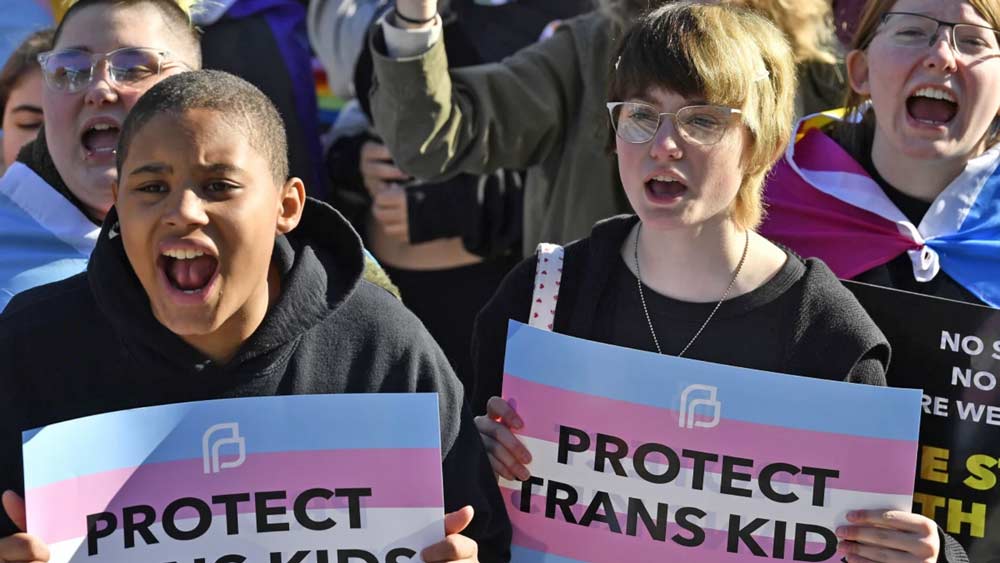October 3, 2011
Census Counts Overestimate Gay Families; Marriage Foes Pounce
Kilian Melloy READ TIME: 4 MIN.
Officials say that the 2010 U.S. Census overcounted gay and lesbian families, due to confusion about how to fill out last year's questionnaire. Moreover, the Census did not directly ask about gay and lesbian couples, making it necessary for the numbers to be extrapolated in the first place and making the risk of mistakes greater than if American households had simply been asked whether they are same-sex or not.
Instead, the Census questionnaire asked the gender and relationship status of others living in the same home. The questionnaire, consisting of a mere 10 questions, had been designed for maximum simplicity, but many people were still confused and some ended up mistakenly indicating that their significant others were people of the same gender. As a result, Census officials now say, the extrapolated initial figures for the number of same-sex headed households there are in the country were inflated by almost one-third.
A newer and theoretically more accurate tally still shows that the presence of gay and lesbian couples in the nation had grown substantially--or, at least, that many more same-sex couples were willing to self-identify. The 2000 count showed only 358,390 same-sex families. That number leapt to 646,464. (The initial count for 2010 had indicated that 901,997 gay and lesbian families had identified themselves.)
Bloomberg reported in an Oct. 3 article that foes of marriage equality pounced on the news that the Census had over-tallied same-sex couples. Anti-gay groups offered cynical advice to lawmakers, telling them that since gay households were less commonplace than initial figures had indicated, the needs of American GLBTs could safely be discounted.
The overcounting of gay and lesbian families was only one of a number of problems, Bloomberg noted. The Census also undercounted the number of people who had lived to be 100 years old, reporting only half the actual number. There is also some question from a number of cities as to whether their populations were accurately reflected in the new Census data. If a city's residents are undercounted, that city is less eligible for a variety of types of federal funding.
"If you don't have the number right, you can't make the right policy with the resources that you have," noted Phil Sparks of the nonpartisan watchdog the Census Project. "If it's a big city, we could be talking about billions of federal dollars spread over 10 years."
In terms of the GLBT community, the revised numbers may or may not be a more accurate reflection of how many gays live in America, how many of them are partnered for the long term, and where, exactly, they live. Though many more same-sex families came forward for the 2010 Census than had self-identified for the 2000 Census, there is no way of knowing how many refused to do so.
"[R]esearchers believe the new estimate could be as much as 15 percent lower than the actual number of gay couples in the U.S. because of social stigma, discrimination or other concerns about confidentiality," the Associated Press reported on Oct. 3. "In a small number of cases, younger gay couples also may not have been counted in the census if they were 'doubling up' in a home where neither was the head of household."
Other than the somewhat misleading suggestion by anti-gay groups that the revised number should encourage anti-gay action by lawmakers, the initial overcount and subsequent correction has little practical impact for gay and lesbian families. The Defense of Marriage Act (DOMA), a 1995 law that deprives same-sex families of any federal recognition, already ensures that gay and lesbian families are provided inferior treatment as compared to other taxpayers, Bloomberg noted.
The results are expensive: A study two years ago showed that a same-sex couple, denied tax benefits, pensions, and other rights and protections that heterosexuals are granted automatically upon marrying, spend as much as $200,000 more out of pocket than straight families do.
The revised Census data show that 131,729 same-sex couples in the U.S. have legally married. Marriage equality has been approved in eight states, but repealed in two of those states by means of ballot initiatives. Even so, the 18,000 couples that married in California before Proposition 8 yanked that right from gays and lesbians in 2008 remain legally married.
Voters in Maine repealed that state's marriage equality law in 2009, before it went into effect.
In any event, the data gathered in 2010 may soon be well out of date, if it isn't already. When New York approved marriage equality this past summer, the number of Americans living in a marriage equality state immediately increased twofold.
Moreover, with the end of Don't Ask, Don't Tell--the 1993 law that forbade military service by openly gay and lesbian patriots--GLBT equality advocates predicted that the already rapid progress in GLBT rights would only accelerate.
All of that taken together might well mean that more gay families will come out of the closet to be counted--and more gay individuals will feel at liberty to form committed relationships.
Kilian Melloy serves as EDGE Media Network's Associate Arts Editor and Staff Contributor. His professional memberships include the National Lesbian & Gay Journalists Association, the Boston Online Film Critics Association, The Gay and Lesbian Entertainment Critics Association, and the Boston Theater Critics Association's Elliot Norton Awards Committee.


